Genre: Puzzle Developer: NCS Publisher: Dreamworks Players: 1 Released: 1990
I have an interesting anecdote involving Shove It! The Warehouse Game. Back in 1990, I went to Texas to visit my father. As there were far more options for buying games in the Lone Star State than there were in sunny Puerto Rico, a friend of mine asked me before I left to buy a game for him. He gave me $50 and a list of three possible games to buy. The last game on the list was Super Hang-On, and that was the one I ended up buying for him, as the first two were sold out. Needless to say, my friend was irate that I had brought him the title he least wanted from his list. He went on a very loud tirade about how I didn’t know how to choose good games, and his antics brought many a puzzled stare from the patrons of the bakery in which he worked.
Confident that he could do better, he snatched Super Hang-On from my grasp and stated that he planned to return it to a local store for a different game, citing its new and sealed condition as his passage to choosing a “good game.” When I went to his house later that evening, he was more pissed than ever. It turns out he returned Super Hang-On and came home with a pristine copy of Shove It!
Now, the sad part of this story isn’t the game he chose but that he was unable to appreciate it. Aside from him being a thankless ass, he was also thick as a brick, and Shove It’s puzzle gameplay was about as over his head as a bank of clouds. Frustrated, he traded it to me for a couple of minor titles, and I was able to sit and tinker with the game in peace.
Based on 1982’s Soko-Ban by Hiroyuki Imabayashi, Dreamwork’s version remains very much the same in spirit and in practice. Players are tasked with moving a set number of crates around a room in order to accommodate them in key points. The crates can be pushed but not pulled, and only one can be moved at a time. Moreover, Stevedore can only redo his last move, which means that each step must be taken with the utmost care. There are sixteen stages, each with ten rooms. Placing each crate onto a white point makes it change color, freeing Stevedore to work with those that remain. The trick is in moving each crate without sticking it in a corner where it can no longer be moved, something that becomes quickly clear within the first two or three rooms.
One would think that a game like Shove It! would start out simple and gradually increase the difficulty. Not so. In fact, things start to get pretty hard by room three, and some of the later areas are a monumental task to complete. A major drawback here is that there is no save feature or password to allow players to rest their weary minds for a later try. Once the power is turned on, it’s all or nothing. Dollars to doughnuts that most people will go with nothing.
I’ve found that Shove It! is a game that grows on you, and not in the fungus sense. No, once you understand that the gameplay is deceptively simple, it’s actually quite fun! Moving Stevedore (it’s in the manual, trust me) around a room, accommodating crates on his way to riches and fame may seem a trifle dull, but it’s not. This warehouse employee believes that earning enough money at his job will allow him to buy a car, which in turn will net him tons of women. I think a wardrobe change might be in order too. Most girls don’t go for the Deliverance look of overalls and a baseball cap.
It’s a good thing that the gameplay is so challenging and engaging then, as Shove It! does not earn marks for presentation. The visuals are overly simplistic, even for such an early Genesis title, and the audio isn’t even mentionable. The few music tracks are forgettable, and the in-game audio is practically non-existent. Then again, what kind of bells and whistles can one expect from pushing crates in a warehouse?
One cool feature is the edit mode, which lets players design and play their own rooms. Everything from the walls to the set points can be applied and edited, and this leads to some really creative (and hard) rooms. Lamentably, the lack of a save feature is a factor here as well, as none of the rooms created can be stored for later use.
It’s kind of hard to gauge a game like Shove It!, since the gameplay is rock solid and time-tested. The presentation does it little credit, something my poor friend never seem to get past, and its simplistic visuals and style are sure to put off more than a few gamers. My advice to them? Don’t be like my friend and give this one a chance. Working in a warehouse isn’t as bad as it seems!
SCORE: 6 out of 10


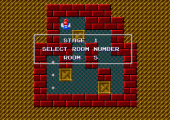
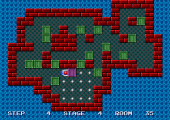
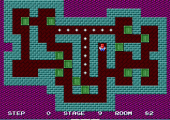
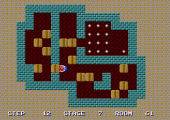
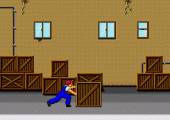
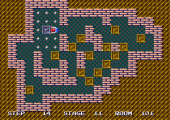
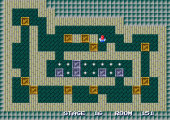
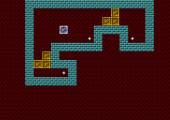
Recent Comments